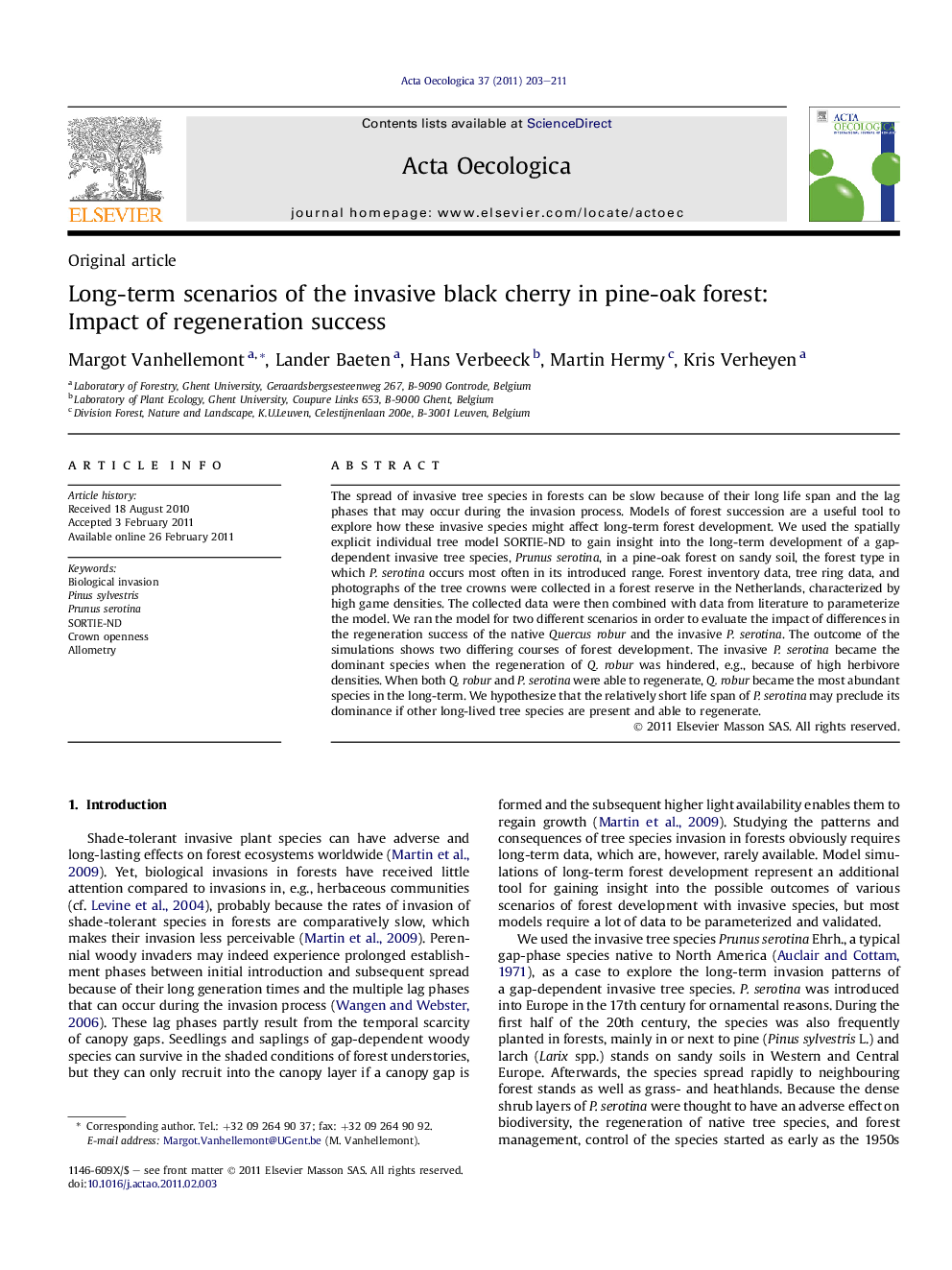| Article ID | Journal | Published Year | Pages | File Type |
|---|---|---|---|---|
| 4380914 | Acta Oecologica | 2011 | 9 Pages |
Abstract
The spread of invasive tree species in forests can be slow because of their long life span and the lag phases that may occur during the invasion process. Models of forest succession are a useful tool to explore how these invasive species might affect long-term forest development. We used the spatially explicit individual tree model SORTIE-ND to gain insight into the long-term development of a gap-dependent invasive tree species, Prunus serotina, in a pine-oak forest on sandy soil, the forest type in which P. serotina occurs most often in its introduced range. Forest inventory data, tree ring data, and photographs of the tree crowns were collected in a forest reserve in the Netherlands, characterized by high game densities. The collected data were then combined with data from literature to parameterize the model. We ran the model for two different scenarios in order to evaluate the impact of differences in the regeneration success of the native Quercus robur and the invasive P. serotina. The outcome of the simulations shows two differing courses of forest development. The invasive P. serotina became the dominant species when the regeneration of Q. robur was hindered, e.g., because of high herbivore densities. When both Q. robur and P. serotina were able to regenerate, Q. robur became the most abundant species in the long-term. We hypothesize that the relatively short life span of P. serotina may preclude its dominance if other long-lived tree species are present and able to regenerate.
Related Topics
Life Sciences
Agricultural and Biological Sciences
Ecology, Evolution, Behavior and Systematics
Authors
Margot Vanhellemont, Lander Baeten, Hans Verbeeck, Martin Hermy, Kris Verheyen,
